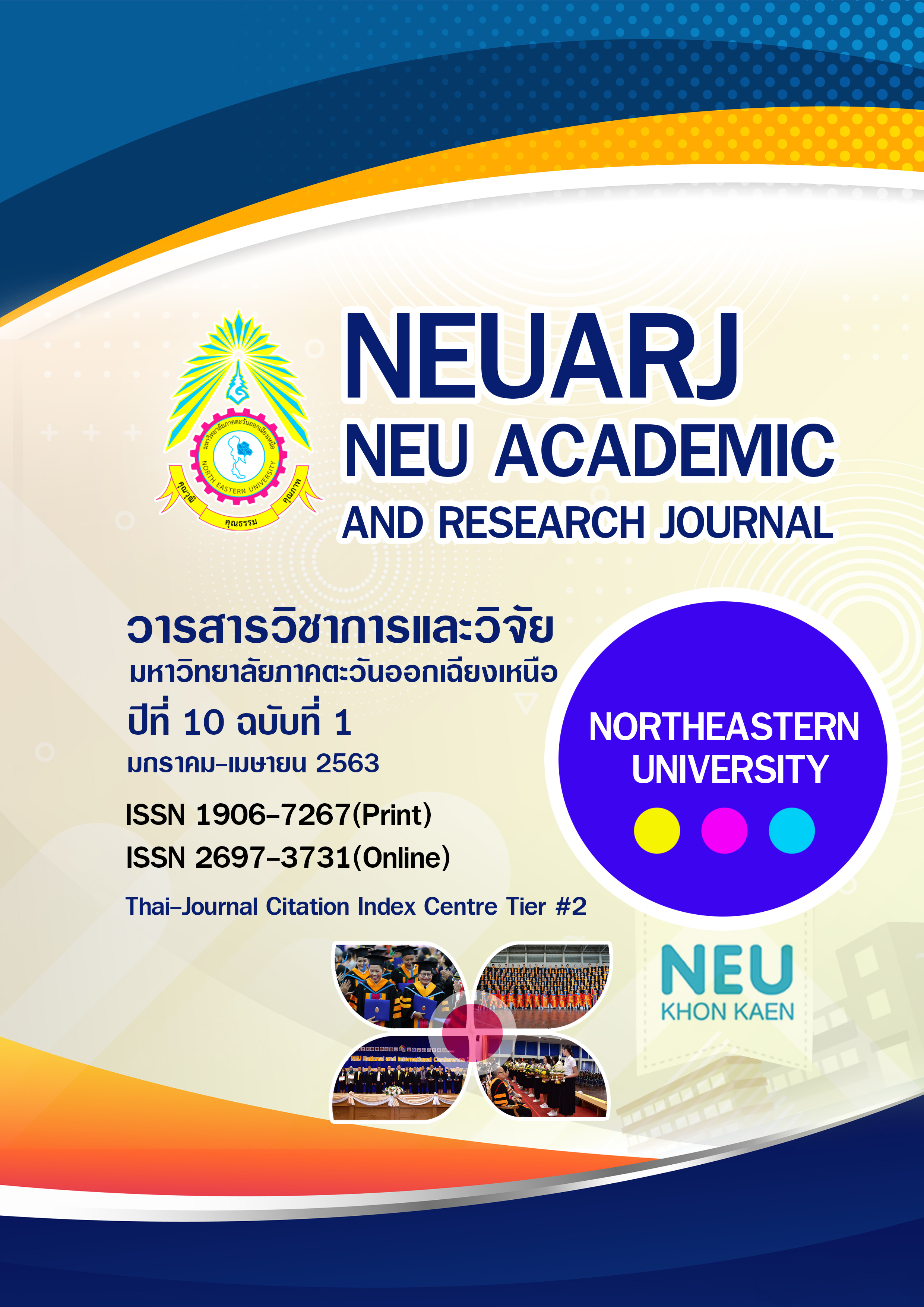Organic Agriculture, Way to Sustainable Agricultural Society: Organic Rice Development Strategy
Keywords:
Sustainable Agriculture, Organic Agriculture, Organic RiceAbstract
Organic farming is another alternative production system that takes into account of the environment and maintaining natural balance for production that does not use chemicals such as chemical fertilizer, pesticide and the method of trimming the karma and hormones are not used. It is a holistic production management which is considered as an alternative agricultural product management for reducing production costs. Organic farming is divided into two types which are self-reliant and organic agriculture that certifies standards from the International Organic Farming Federation. Today, consumers have a tendency to be aware of food safety significantly according to the safe food consumption trend of foreign countries. The organic products that are exported the most to the foreign markets are jasmine rice, accounting for 96.0%, followed by vegetables, fruits, including aquatic animals such as shrimp and fish, with the export value of around 13,000 baht or about a hundred or 0.15% of the world market. It is considered that Thailand exported least compared to the demand of the Americas and Europe. The opportunity of organic produce is still considered as an important opportunity for Thai farmers, who can sell organic products according to the needs of the world market around billions of baht per year. Major markets includes America, Japan and China that can support many more production. If Thai farmers focus on organic agriculture, it will be an opportunity to get income and wealthiness for sustainable agriculture.
References
กรมวิชาการเกษตร. (2543). มาตรฐานการผลิตพืชอินทรีย์ของไทย. กรุงเทพฯ : กระทรวงเกษตรและสหกรณ์.
กระทรวงพาณิชย์. (2557). สถิติการค้าระหว่างประเทศไทย. สืบค้นเมื่อวันที่ 1 กันยายน 2559 จาก, http://www.moc.go.th
กรีนเนท. (2557). สถานการณ์เกษตรอินทรีย์ไทย. สืบค้นเมื่อวันที่ 1 กันยายน 2559.จาก, http://www.greenet.or.th/article/organic-farming.
เดชพันธุ์ สวัสดี. (2558). ยุทธศาสตร์การพัฒนาข้าวอินทรีย์ไทย. กรุงเทพฯ : สถาบันส่งเสริมการบริหารกิจการบ้านเมืองที่ดี, สำนักงานคณะกรรมการพัฒนาข้าราชการพลเรือน.
วราภรณ์ ชัยวินิจ. (2556). “เกษตรอินทรีย์....วิถีสู่สังคมเกษตรยั่งยืน.” วารสารเพื่อการพัฒนาชน, เมษายน, 2556.
ศูนย์วิจัยกสิกรไทย. (2557). การเติบโตของตลาดเกษตรอินทรีย์ในตลาดอาเซียน AEC.สืบค้นเมื่อวันที่ 1 กันยายน 2559 จาก, http://www.Ksme care com.
สำนักงานนวัตกรรมแห่งชาติ. (2557). INNO-VATION. .สืบค้นเมื่อวันที่ 1 กันยายน 2559 จาก http://www.nawachione.or.th/activity/knowledge-center/bio-enegetic-organic-agriculture/.
สำนักมาตรฐานเกษตรอินทรีย์. (2557). ระบบเกษตรอินทรีย์ IFOAM. สืบค้นเมื่อวันที่ 1 กันยายน 2559 จาก, http://www.nia.or.th/innolinks/page.php.
สุณัฐนีย์ น้อยโสภา. (2558). “เกษตรอินทรีย์ : โอกาสการส่งออกของเกษตรกรไทยในตลาดโลก.” วารสารมหาวิทยาลัยธนบุรี. (9),1- 8 มกราคม-เมษายน 2558.



